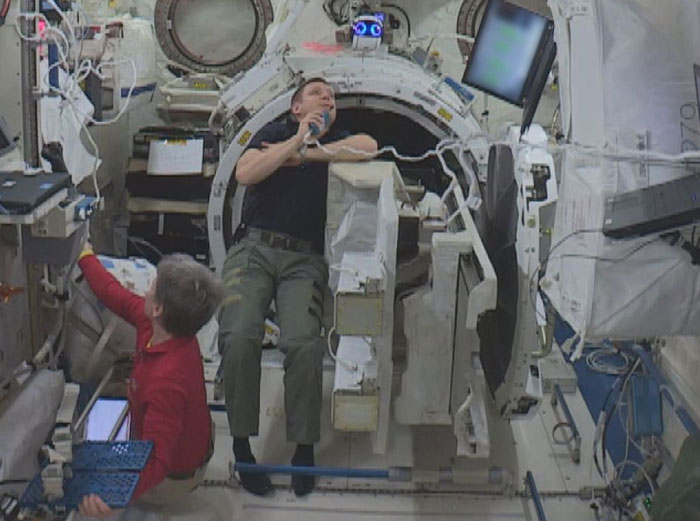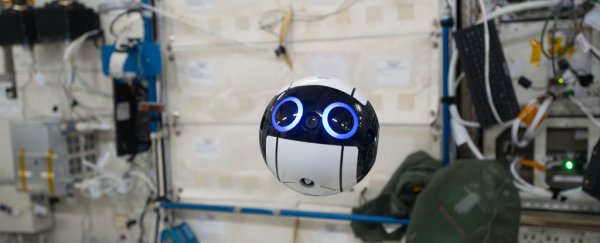You know that creepy black sphere used as a floating interrogation droid in Star Wars? It seems like scientists at the Japan Aerospace Exploration Agency (JAXA) pretty much designed the complete opposite of that, and we want one for our very own.
Called Int-Ball, this adorable little camera drone resembles something Pixar might have come up with, but it's totally real, and is now a floating companion to astronauts on board the International Space Station (ISS) – where it helps out by taking photos and recording video, freeing up valuable astronaut time.
Int-Ball was delivered to the ISS in a SpaceX cargo shipment last month – the company's first involving a reused Dragon cargo capsule – and is now operational, currently undergoing initial testing.
It looks like those checks are going pretty smoothly too, with JAXA having just released the first test footage captured by its little floating bot (aka the JEM Internal Ball Camera).
You can check out Int-Ball's debut camerawork in the following YouTube clip, which is backed by possibly the most twee music ever used in an official video released by a space agency (although it's strangely fitting too, given Int-Ball's cutesy, somewhat Kirby-like proportions):

According to JAXA, Int-Ball can move autonomously in space, and can also be remotely controlled by flight controllers and researchers on the ground, who can relay its footage in real-time back to astronauts on the ISS for review and follow-up.
The little orb only measures 15 centimetres (6 inches) in diameter and weighs 1 kg (2.2 lbs), and was largely manufactured using 3D printing.
Along the surface of the sphere, 12 fans are positioned to enable Int-Ball to move around, while a number of '3D Target Markers' placed on the ISS's internal walls help the drone to orientate itself so it can navigate from place to place.
JAXA says that as much as 10 percent of astronaut working hours on board the ISS has crew members with a camera in hand, so by offloading the camerawork and videography to a little floating bot, it could free up researchers significantly to focus on conducting experiments and other important tasks.
Int-Ball is also serving as a test case so that JAXA scientists can see how well floating drones operate in the microgravity environment on board the ISS.
 JAXA/NASA
JAXA/NASA
Taking care of video is an important gig, sure, but it's definitely only a starting point.
In the future it's conceivable that little autonomous drones like this could perform other kinds of jobs both inside and outside the ISS, helping astronauts by fetching or operating equipment, checking on supplies, or conducting repairs and maintenance on the station itself.
In the meantime, Int-Ball will have to stick to playing camera operator while JAXA figures out just what this technology is capable of, but we doubt very much that the ISS human crew mind having their tiny new pal around the joint.
After all, space can be a pretty lonely place.
